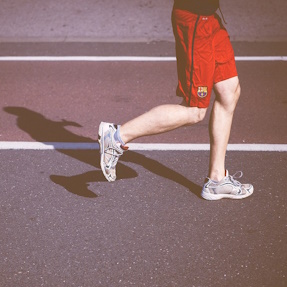
Exercises remarkable ability to protect the prostate
Most people agree that taking preventative measures is key, especially when it comes to maintaining a healthy prostate. It’s hard to dispute the numerous advantages of being physically active. Not only does it help maintain a healthy weight, but it also lowers the likelihood of heart attacks, strokes, type 2 diabetes, and osteoporosis. The benefits of physical activity are vast and apply to everyone.
When talking about the numerous advantages of exercise, it’s important to include the benefits it has on a man’s prostate health. Regular exercise can safeguard the prostate from various issues that may arise later in life.
Why physical activity benefits the prostate gland
A man’s prostate gland, located just below the bladder, produces fluid that protects and enriches semen.
As a man grows older, the prostate gland may start to experience problems that were not present before. Although the prostate may function normally for many years, it can eventually become susceptible to infections and inflammation that cause discomfort (prostatitis). Additionally, it may enlarge in size, leading to difficulty with urination (benign prostatic hyperplasia or BPH). Prostate cancer, the second most prevalent cancer among American men, is also a possibility.
Who would ever guess a gland so small could cause so many issues for men?
Adopting certain lifestyle habits can help men maintain a healthy prostate. This includes eating a nutritious diet, maintaining a healthy weight, and avoiding smoking. Regular exercise is also known to be helpful in preventing prostate problems. Here are some reasons why exercise can have a positive impact on keeping a man’s prostate healthy, potentially reducing the risk of developing prostatitis, BPH, or prostate cancer:
Physical activity and Prostatitis
Prostatitis refers to the inflammation of the prostate gland and is typically observed in men below the age of 50. This condition is primarily caused by an infection, affecting nearly 2 million men annually.
Prostatitis can be categorized as either acute or chronic. Chronic prostatitis is more common and is characterized by repeated bacterial infections. Two studies have examined whether exercise could lower a man’s risk of this painful, ongoing condition.
The first study focused on the role of physical activity on how it affected chronic prostatitis. Researchers recruited 231 men with the condition and had no luck with conventional treatments. Participants were randomly assigned to either an aerobic or a placebo/stretching and motion exercise group.
After the study, participants assigned to the aerobic exercise group had significantly superior improvements compared to the placebo/stretching and motion exercise group.
A much larger cohort study in 2015 reviewed the association between physical activity and chronic prostatitis of more than 20,000 male health professionals. Results showed that middle-aged and older men with a higher-leisure time physical activity had a lower risk of chronic prostatitis than men who were not as active.
Physical activity and BPH prevention
Enlargement of the prostate gland, better known as benign prostatic hyperplasia or BPH, usually occurs in men as they age. When the prostate grows larger, it can block the flow of urine through the urethra, a tube necessary to carry urine from the bladder out through the penis. This can lead to urinary difficulties such as frequent urination, especially at night.
A study out of South Korea wanted to find out if exercise, as part of a healthy lifestyle, was a protective factor preventing BPH occurrence. Results showed that reducing sedentary time could have a protective effect on reducing the incidence of BPH.
Another study of the ongoing Harvard-based Health Professionals Follow-up Study found that more physically active men were less likely to develop BPH. They found that even low-to-moderate-intensity physical activity, such as walking regularly at a moderate pace, benefits the prostate.
Physical activity and Prostate cancer
The American Cancer Society states that 1 in 8 men will be diagnosed with prostate cancer during their lifetime. Most cases occur in older men, with the average age being 66 and is rare before age 40. Other than skin cancer, prostate cancer is the second leading cancer diagnosed in American men. It would behoove a man to do whatever he could to help prevent it. Exercise is one way to do this.
A study looking into the evidence of exercise’s benefits on reducing prostate cancer risk found that physically active men had lower levels of systemic inflammatory mediators that could decrease the development of this disease.
Another study looked at specific health habits following a diagnosis of prostate cancer and the risk of disease recurrence, progression, or death. It was found that even though diet played a role
in prostate cancer progression, exercise, and smoking cessation appeared to have a more significant impact on reducing the risk of prostate cancer progression and death.
Making exercise a lifestyle habit
Maintaining a healthy lifestyle involves exercise, which protects the prostate and improves cardiovascular health. By adopting a consistent and well-rounded exercise program, men can reap prostate health benefits.
Men must find an exercise program that they enjoy and is approved by their doctor, considering their health and fitness level. Including at least 30 minutes, preferably 60 minutes, of moderate to vigorous physical activity on all or most days of the week in their exercise routine is recommended.
Dr. David Samadi is the Director of Men’s Health and Urologic Oncology at St. Francis Hospital in Long Island. He’s a renowned and highly successful board certified Urologic Oncologist Expert and Robotic Surgeon in New York City, regarded as one of the leading prostate surgeons in the U.S., with a vast expertise in prostate cancer treatment and Robotic-Assisted Laparoscopic Prostatectomy. Dr. Samadi is a medical contributor to NewsMax TV and is also the author of The Ultimate MANual, Dr. Samadi’s Guide to Men’s Health and Wellness, available online both on Amazon and Barnes & Noble. Visit Dr. Samadi’s websites at robotic oncology and prostate cancer 911.
